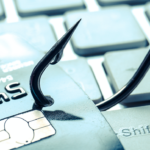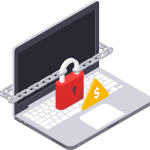All software has defects (known as bugs) and bad design — which make computers vulnerable to attack. The Windows operating system, Office suites, media players, browsers and browser plug-ins are just a few examples of software that are open to attack.
An Attack vector (or just vector) is a specific computer-system vulnerability, along with the path and method that exploits it. It’s just a particular way to gain access to a computer in order to install malware, gain external control, or extract user data. (You might have a state-of-the-art burglar alarm at home, but if you leave the back door unlocked to let the cat in, you have created an attack vector)
There are other places to attack computer systems besides the software. The human element — the component between the chair and the keyboard — is often the most vulnerable part of a computer system. In humorous terms, this is known to computer geeks as a PEBKAC error. (Problem Exists Between Keyboard And Chair)
Email attachments have been the classic vector to use against humans. Email messages entice or alarm users, to open malicious attachments. Once opened, these attachment do the dirty work, often with the willing permission and participation of the victim. These attacks rely on deception to get past defense systems.
Along with attachments, email messages, downloaded files, infected webpages, videos, popup windows, instant messages, and social media (blogs, Facebook, Twitter) are vehicles for many popular attack vectors.
One Ring to rule them all! This saying comes from the “Lord of the Rings”. Often people become victims of online fraud by using the same password or usernames on multiple sites, including social media sites and Internet banking sites. Your online banking site and Facebook profile should never have the same password. Facebook is easily compromised, opening up a vulnerability to your Internet banking security.
Take a look at your online presence. How much information is out there about you that could be pieced together to scam you? Your name? Email address? Friends’ names? Their email addresses? Are you on, for example, any of the popular social networking sites? Take a look at your posts. Anything there you don’t want a scammer to know? Or have you posted something on a friend’s page that might reveal too much?
Passwords: Do you use just one password or easy-to-figure-out variations on just one? If you do either, you should not. You are making it easy for a phishing scammer to get access to your personal financial information. Every password for every site you visit should be different. Random letters and numbers work best. Change them frequently.









